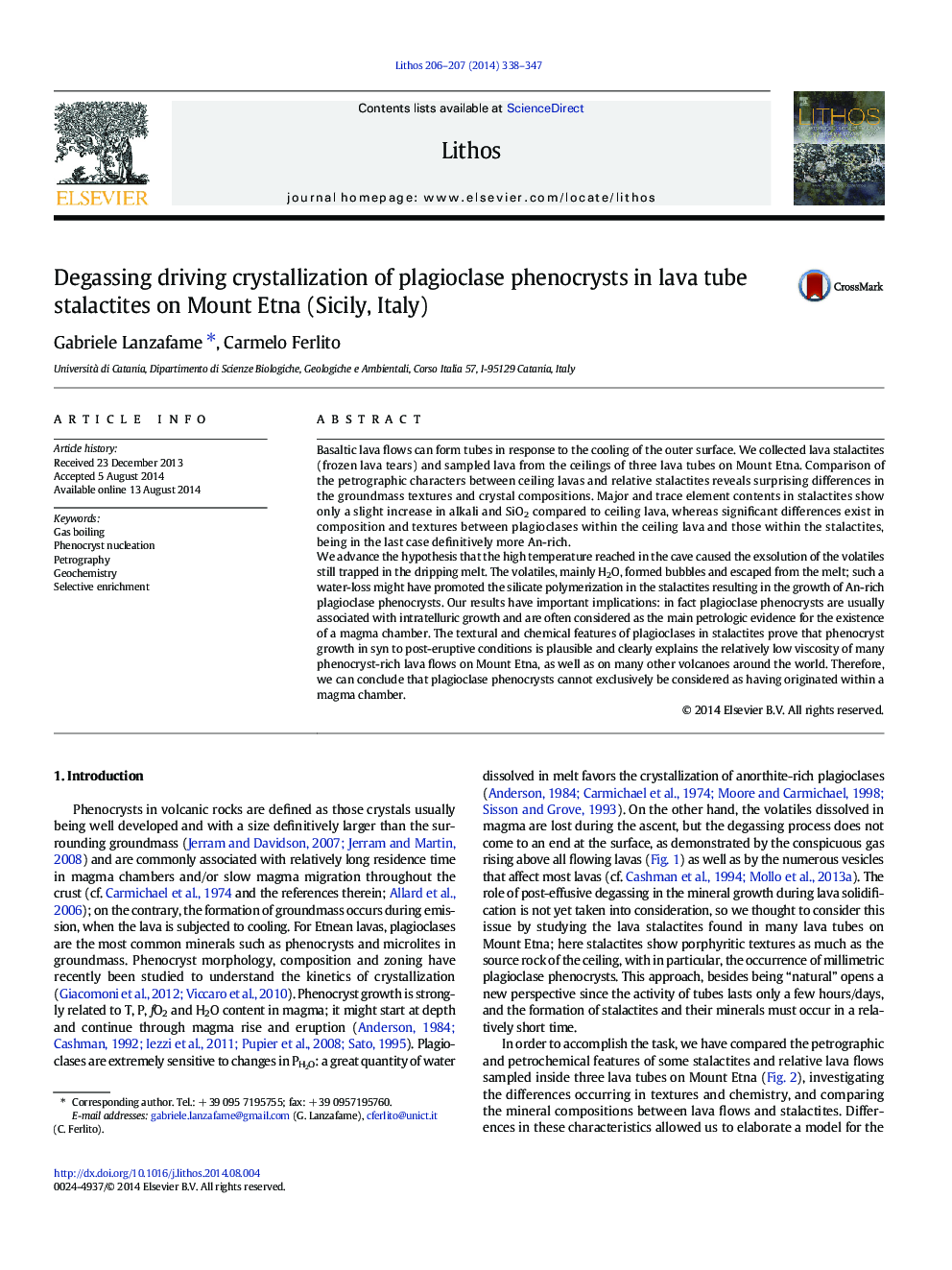| Article ID | Journal | Published Year | Pages | File Type |
|---|---|---|---|---|
| 4715956 | Lithos | 2014 | 10 Pages |
Abstract
We advance the hypothesis that the high temperature reached in the cave caused the exsolution of the volatiles still trapped in the dripping melt. The volatiles, mainly H2O, formed bubbles and escaped from the melt; such a water-loss might have promoted the silicate polymerization in the stalactites resulting in the growth of An-rich plagioclase phenocrysts. Our results have important implications: in fact plagioclase phenocrysts are usually associated with intratelluric growth and are often considered as the main petrologic evidence for the existence of a magma chamber. The textural and chemical features of plagioclases in stalactites prove that phenocryst growth in syn to post-eruptive conditions is plausible and clearly explains the relatively low viscosity of many phenocryst-rich lava flows on Mount Etna, as well as on many other volcanoes around the world. Therefore, we can conclude that plagioclase phenocrysts cannot exclusively be considered as having originated within a magma chamber.
Related Topics
Physical Sciences and Engineering
Earth and Planetary Sciences
Geochemistry and Petrology
Authors
Gabriele Lanzafame, Carmelo Ferlito,
